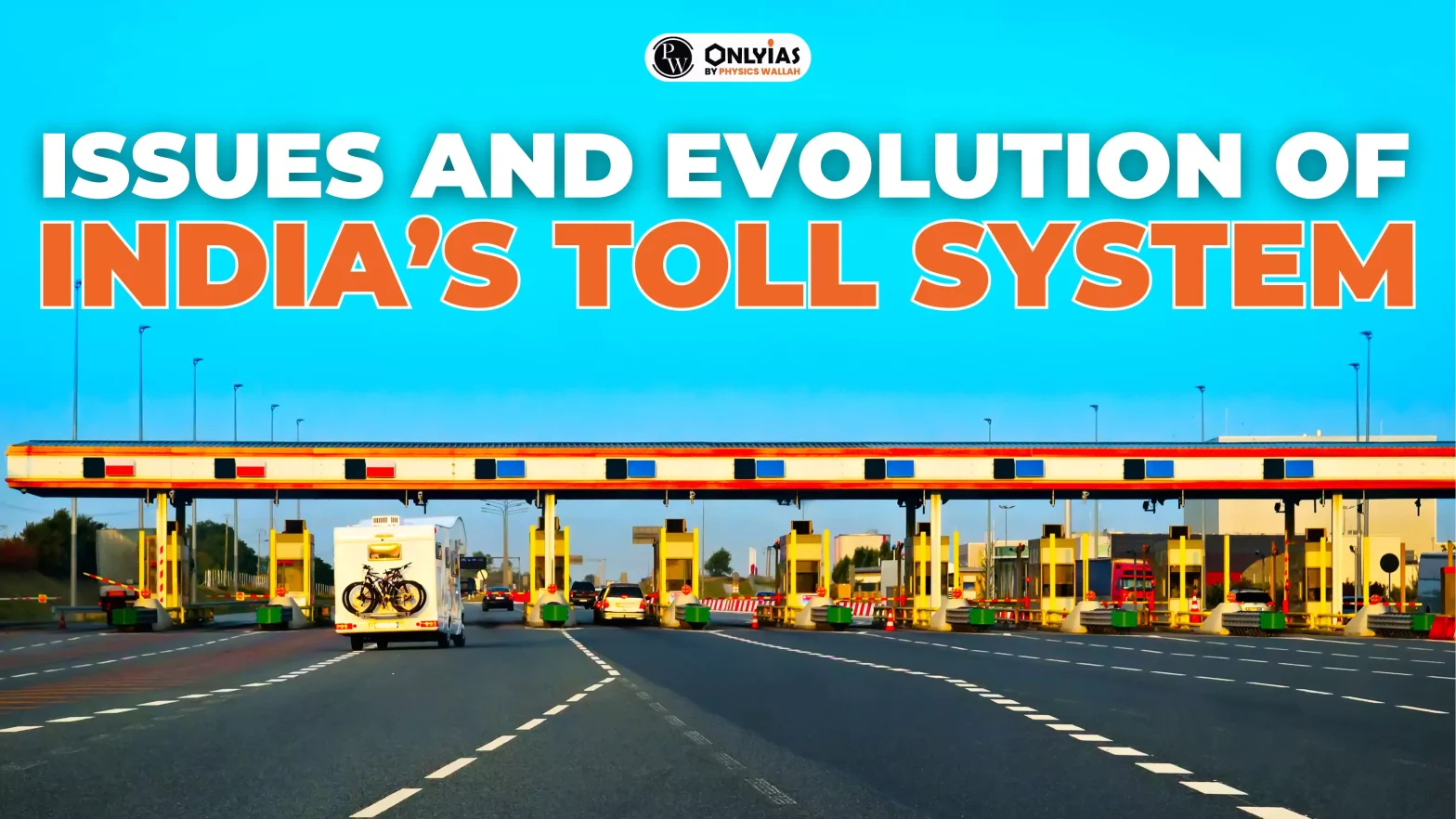In December 2022, Gujarat police uncovered a fake toll plaza in Morbi district, Gujarat, situated just 600 metres from the official NHAI toll plaza on National Highway 8A. Over 1.5 years, the five accused collected over ₹75 crore from vehicles. This incident raises serious concerns about the efficiency and security of India’s toll system, highlighting the risk that similar fraudulent toll plazas could be operating in other remote or less monitored areas, and emphasising the need for improved oversight and regulation.
Historical Background
- Mauryan Empire: The concept of toll collection is first mentioned in Kautilya’s Arthashastra, which describes the role of the Sulkaadhyaksh, an official responsible for toll collection.
- Medieval Period: During this era, tolls and revenue were collected by officials known as Amils.
- Modern Toll System: Introduced by the British with the Indian Tolls Act of 1851, which granted the authority to collect tolls on public roads and bridges.
- Post-Independence: The National Highway Act of 1956 was enacted to designate certain roads as national highways. This legislation aimed to improve road infrastructure, which played a crucial role in the Indian economy. Toll collection was implemented to generate revenue for road maintenance and further construction. Since then, the government was responsible for building and maintaining roads as well as collecting tolls.
- 1988: The National Highways Authority of India (NHAI) was established to oversee road development and toll collection.
- 1995: The National Highway Act of 1956 was amended to allow private players to participate in road construction and toll collection. This introduced two Public-Private Partnership (PPP) models:
- BOT Toll Model (Build, Operate, Transfer): Private companies build highways and recover their costs through toll collection over a set period before transferring ownership to the government.
- BOT Annuity Model: The government guarantees returns to private players by compensating them if the toll revenue falls short of the anticipated amount.
Enroll now for UPSC Online Classes
Key Problems in the Indian Toll System
- Traffic Congestion: Poorly managed toll systems cause long wait times at plazas, resulting in traffic jams that lead to excessive fuel consumption, time loss, and economic inefficiencies.
- For example, at the Khed-Shivapur toll plaza in Maharashtra, both manual and electronic toll collection methods are in use, yet traffic jams persist. A case study by JSPM Rajarshi College revealed that vehicles often spend over 10 minutes at the plaza, leading to significant fuel and time wastage, and highlighting inefficiencies in the system.
- Also, according to NHAI rules, vehicles waiting longer than 3 minutes should not be charged tolls, but this rule is frequently ignored.
- Transparency Issues: There is a lack of transparency regarding toll collections by private companies. RTI activist Sanjay Shirodkar and Vivek Velankar of Sajag Nagrik Manch have uncovered discrepancies in toll data on the Pune Expressway, revealing that contractors manipulated figures to maintain the same vehicle count over a decade despite economic growth. This discrepancy allows them to extend their toll operation deadlines unfairly.
- Poor Roads, High Tolls: Indian tolls are comparatively lower at ₹2.25/km, but the quality of roads and facilities remains inadequate.
- In contrast, countries like France and Japan, where tolls are much higher (₹9.05/km and ₹13/km respectively), provide significantly better road infrastructure and amenities.
- Double Taxation: Vehicle owners pay road tax when purchasing vehicles (e.g., 17% in Bangalore), but tolls are still collected. This creates a burden on consumers who face multiple forms of taxation for road usage.
- Extortion by Criminals: There have been frequent reports of criminals extorting money from toll plaza employees. Local criminals sometimes infiltrate toll plaza staff to exploit drivers, further exacerbating the problem.
Government Initiatives
- CCTV Surveillance and Hybrid Lanes: Enhancing monitoring through hybrid lanes and fast-track roads to reduce congestion and improve traffic flow.
- FASTag Implementation: Mandating electronic toll collection for smoother transit and accurate toll data. While FASTag has streamlined the process, traffic congestion still occurs. In this regard Future plans include GPS-based tolling systems with:
- Satellite-Based Toll Collection: Using GNSS (Global Navigation Satellite System) and GPS for automatic toll calculation.
- On-Board Units (OBUs): Installing devices in cars for automatic toll deductions when any vehicle enters highways based on distance travelled. Thus, it aims to reduce congestion by eliminating the need for cars to stop at gates for manual or electronic toll collection before entering highways. The first 20 km of travel will be toll-free.
Check Out UPSC NCERT Textbooks From PW Store
Conclusion
India’s toll system has undergone significant evolution, from historical practices to modern frameworks incorporating public-private partnerships. Advancements such as FASTag and satellite-based toll collection offer promising solutions to enhance efficiency and reduce congestion. However, to realise their full potential, effective implementation and continuous refinement of these technologies are essential to address existing issues and improve the overall performance of the toll system.
![]() 16 Sep 2024
16 Sep 2024

